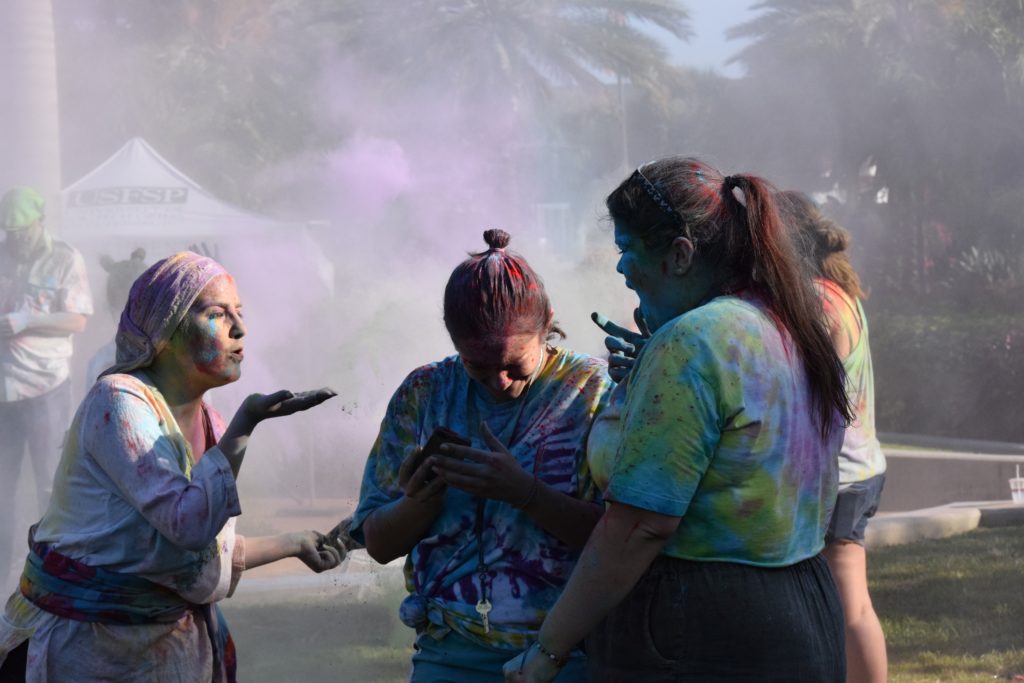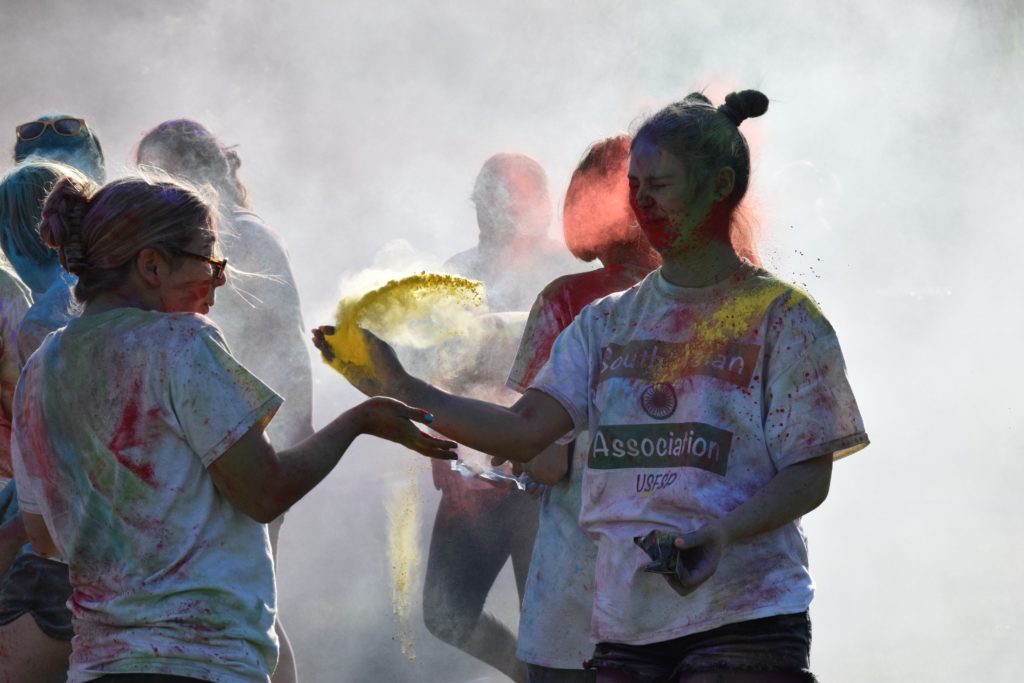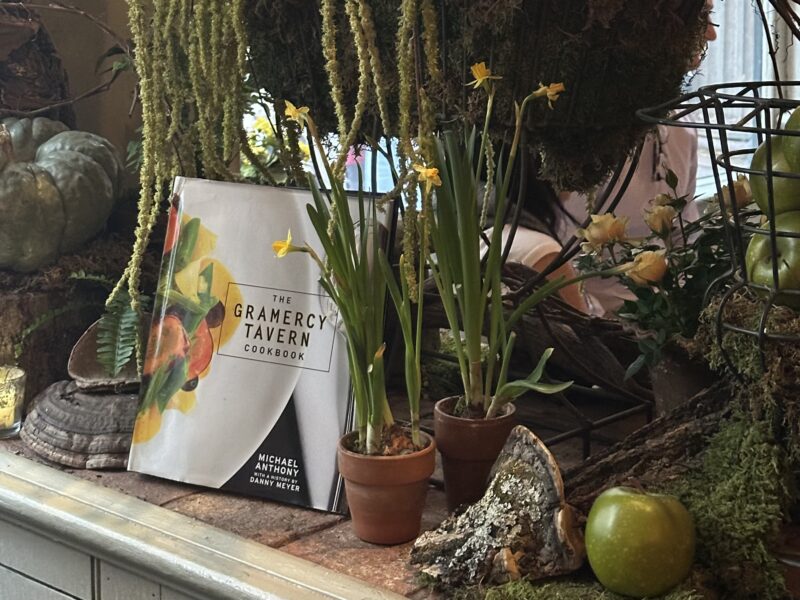“We have 700 packets of colored powder to go through, y’all,” shouted DJ Silencer over the booming Bollywood music. “We are going to turn USF into a rainbow, but don’t worry because the color will come off in the wash.”
Six students in white T-shirts stood ready on each side of the harbor lawn, their eyes on the 10 packs of powdered color laid on the grass before them.
“Three, two, one. GO!”
Like at the start of a dodgeball match, the students sprinted forward. Elliott Darrow, a freshman zoology major, dropped to the ground to snag a color packet before he could be stampeded by the students rushing toward him. Ripping the package with his teeth, he flung it up into the air, blanketing everyone in a cloud of green dust.
April 12 marked the fourth year of Holi Hai at USF St. Petersburg, the Indian Festival of Colors that celebrates the coming of spring and the joy of friendship.
Hosted by the South Asian Association (SAA), the event included Indian food and a mixture of Bollywood and Bhangra dancing, as well as 700 packages of red, blue, green, yellow and pink powder which represent happiness, love and the freedom to live vibrantly.
Radhika Dang, founder and president of SAA, wanted a way for students to know more about Indian culture than just Indian restaurants and Bollywood, so she began hosting Holi Hai on campus.
“The colors are like the rebirth that occurs during the spring when flowers start to grow again in preparation for the summer,” Dang said.
Holi Hai has been one of the most memorable student events on campus, reaching around 70 students in its first year.

Yesenia Santiago, a sophomore psychology major, who participated in the event said, “I liked the colors the most. Running through a cloud of color, there’s no way to explain it. It was a surreal feeling and I didn’t feel like I was in the middle of a college campus.”
Santiago was caked in a myriad of colored chalk, with the thickest layer being on her hair, forehead and T-shirt.
“I can feel the chalk in my eyebrows,” she said. “It feels like baby powder.”
Santiago’s friend Sofia Roca, a freshman business major who was also coated in chalk, said she loved the Bollywood dancing.
“The movements were not like traditional American-style dancing,” Roca said.
Dang and her friends, junior marketing student Savannah Harrison and Asmita Palsule, a freshman finance major, provided the dancing talent.
The three women wore aviator sunglasses and pale, sandy-colored Patiala suits that Dang brought back from India when she visited in February. They danced the Bhangra, a traditional folk dance originating in the Indian state of Punjab. The side-to-side neck movements and forward-and-back foot slides enthralled the nearly 25 students who watched the performance.
Signifying the different types of dances, Dang and Harrison changed out of their Patiala shirts and into T-shirts for the Bollywood dancing segment to distinguish that they were no longer doing traditional Indian dances.
Choreographed by Dang and Harrison, the three dancers began learning the dances in January, practicing two, sometimes three times a week.
Just before the event, Harrison, Palsule and Dang did some last minute practicing in the USC women’s bathroom.
“It’s a little silly tradition we have that dates back to our first performance together,” said Harrison, who has been friends with Dang ever since a creative writing class three years ago.
“Even though we had worked hard all semester to perfect our two dances for that [first] evening, I was still incredibly nervous. So while we were getting ready in the USC bathroom Radhika played our songs and we did a couple light runs through our dances.
“It was just a little thing, but it helped ease my nerves a lot. Ever since then it’s become part of our day-of-show ritual.”

In the four years that Dang hosted Holi Hai, the most common reaction she’s gotten from students about the event are from those who’ve participated in the holiday the year before and remembered how much they enjoyed it.
“These kids who show up are genuinely having fun and I love how everyone connects over this,” she said.
Although the Holi Hai holiday is traditionally done with family and friends, this didn’t stop the students from being overcome with laughter when a complete stranger ran up to them to smear red chalk on their cheeks and foreheads.
“The great thing about this event is that you don’t know each other before you come out,” Dang said. “But by the time you’ve dumped blue powder on someone’s head, you do.”



